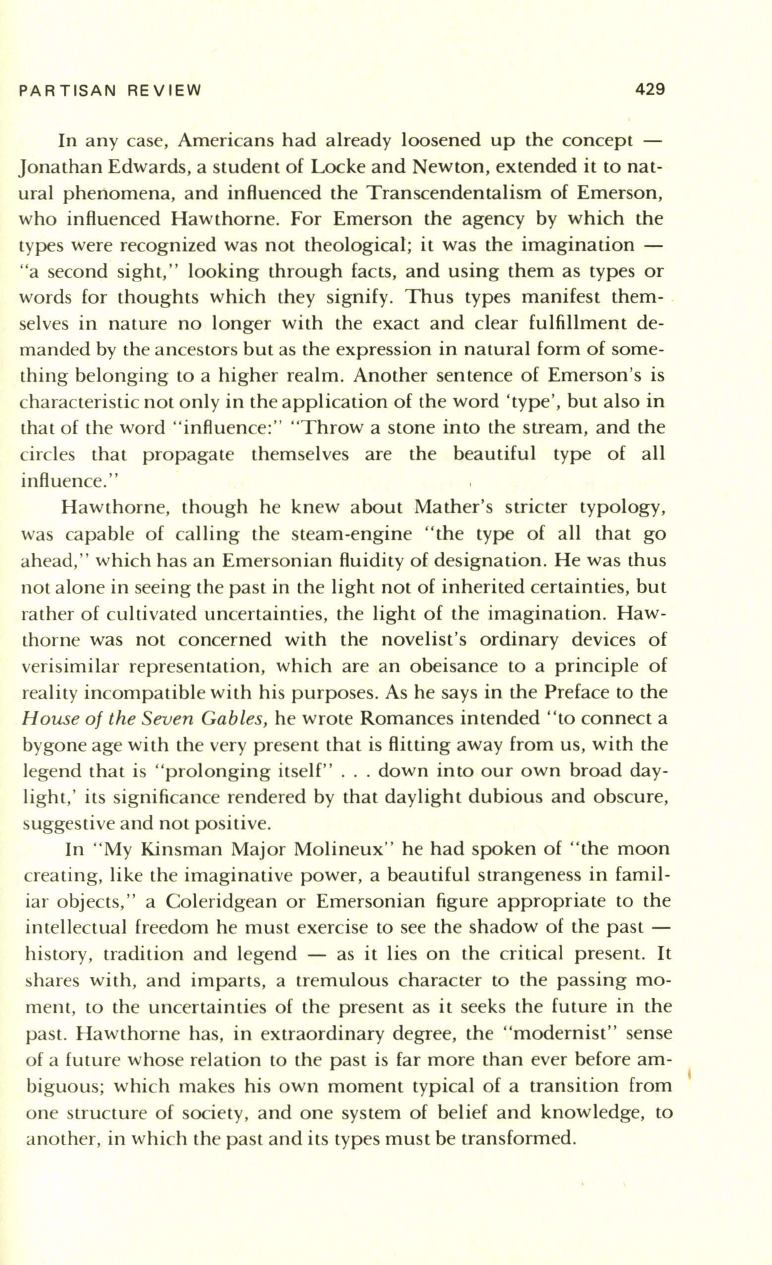
PARTISAN REVIEW
429
In any case, Americans had already loosened up the concept -
Jonathan Edwards, a student of Locke and Newton, extended it to nat–
ural phenomena, and influenced the Transcendentalism of Emerson,
who influenced Hawthorne. For Emerson the agency by which the
types were recognized was not theological; it was the imagination -
"a second sight," looking through facts, and using them as types or
words for thoughts which they signify. Thus types manifest them–
selves in nature no longer with the exact and clear fulfillment de–
manded by the ancestors but as the expression in natural form of some–
thing belonging to a higher realm. Another sentence of Emerson's is
characteristic not only in the application of the word 'type', but also in
that of the word " influence:" "Throw a stone into the stream, and the
circles that propagate themselves are the beautiful type of all
influence."
Hawthorne, though he knew about Mather's stricter typology,
was capable of calling the steam-engine "the type of all that go
ahead, " which has an Emersonian fluidity of designation. He was thus
not alone in seeing the past in the light not of inherited certainties, but
rather of cultivated uncertainties, the light of the imagination. Haw–
thorne was not concerned with the novelist's ordinary devices of
verisimilar representation, which are an obeisance to a principle of
reality incompatible with his purposes. As he says in the Preface to the
House of the Seven Gables,
he wrote Romances intended "to connect a
bygone age with the very present that is flitting away from us, with the
legend that is "prolonging itself" ... down into our own broad day–
light,' its significance rendered by that daylight dubious and obscure,
suggestive and not positive.
In "My Kinsman Major Molineux" he had spoken of "the moon
creating, like the imaginative power, a beautiful strangeness in famil–
iar objects," a Coleridgean or Emersonian figure appropriate to the
intellectual freedom he must exercise to see the shadow of the past -
history, tradition and legend - as it lies on the critical present. It
shares with, and imparts, a tremulous character to the passing mo–
ment, to the uncertainties of the present as it seeks the future in the
past. Hawthorne has, in extraordinary degree, the "modernist" sense
of a future whose relation to the past is far more than ever before am–
biguous; which makes his own moment typical of a transition from
one structure of society, and one system of belief and knowledge, to
another, in which the past and its types must be transformed.


